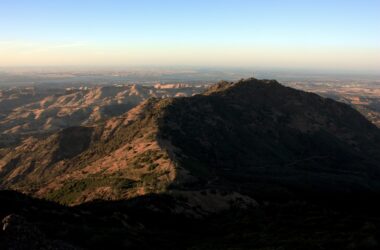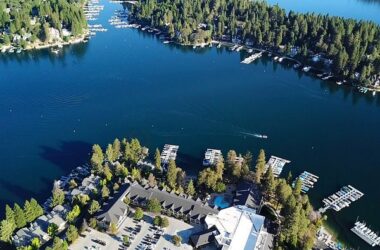Gates of the Arctic National Park is a breathtakingly beautiful and remote wilderness area located in the northern part of Alaska. The park is situated above the Arctic Circle and encompasses over 8.4 million acres of untouched wilderness, making it one of the most unspoiled natural areas in the world. Visitors to the park can experience a true sense of adventure and exploration, as they trek through rugged mountains, cross icy rivers, and marvel at the stunning wildlife that calls this park home.
In this guide, we will provide you with all the information you need to plan your visit to the Gates of the Arctic National Park. From the best time to visit the most popular activities and attractions, we’ve got you covered.
Getting to Gates of the Arctic National Park
Getting to the Gates of the Arctic National Park can be a challenge, as there are no roads or established trails leading into the park. Visitors must rely on air transportation to access the park, either by private plane or by booking a flight with one of the regional air carriers that service the area. The park’s main entrance is located in the small town of Bettles, which is approximately 180 miles north of Fairbanks, Alaska.
When planning your trip to Gates of the Arctic National Park, it’s important to keep in mind that the park is only accessible during the summer months. The park is closed during the winter due to extreme weather conditions, including long periods of darkness and temperatures that can drop below -50 degrees Fahrenheit.
Best Time to Visit Gates of the Arctic National Park
The best time to visit Gates of the Arctic National Park is during the summer months, from mid-June to mid-September. During this time, the weather is mild, and visitors can enjoy long days of daylight, with the sun never set during the peak of summer. The warmer weather also allows for easier access to the park’s backcountry, with many of the rivers and streams that are impassable during the winter months becoming navigable by raft or kayak.
One thing to keep in mind when planning your trip to Gates of the Arctic National Park is that the weather can be unpredictable, even during the summer months. Visitors should come prepared for a range of weather conditions, including rain, wind, and even snow. It’s also important to be aware of the potential for high winds and thunderstorms, which can pose a significant danger to hikers and backpackers.
Activities in Gates of the Arctic National Park
Gates of the Arctic National Park offer a wide range of activities for visitors, from backcountry hiking and camping to rafting and fishing. Here are some of the most popular activities to consider during your visit:
- Hiking and Backpacking: The park offers a vast network of backcountry trails that wind through the mountains and valleys of the park. These trails range in difficulty from easy day hikes to multi-day backpacking trips and offer stunning views of the park’s pristine wilderness.
- Rafting and Kayaking: The rivers and streams of Gates of the Arctic National Park provide excellent opportunities for rafting and kayaking. Visitors can navigate these waterways on guided tours or by renting their own equipment.
- Fishing: The park’s rivers and lakes are teeming with a variety of fish species, including Arctic grayling, Dolly Varden, and northern pike. Visitors can fish in designated areas or on guided tours.
- Wildlife Viewing: Gates of the Arctic National Park are home to a wide range of wildlife, including grizzly bears, caribou, moose, wolves, and more. Visitors can view these animals from a safe distance on guided tours or while hiking in the backcountry.
- Camping: The park offers a variety of camping options, including backcountry camping and front-country camping at designated campgrounds. Backcountry camping requires a permit, and visitors should be prepared to follow Leave No Trace principles to minimize their impact on the environment.
- Photography: With its stunning landscapes and diverse wildlife, Gates of the Arctic National Park is a photographer’s dream. Visitors can capture images of snow-capped mountains, glacier-fed rivers, and wildlife in their natural habitat.
- Cultural Tours: The park is also home to several indigenous communities, including the Inupiaq, Koyukon, and Gwich’in people. Visitors can learn about their culture and history through guided tours and visits to local communities.
Things to Consider Before Visiting Gates of the Arctic National Park
Before visiting the Gates of the Arctic National Park, visitors should be aware of a few important considerations. Here are some things to keep in mind:
- Safety: The remote nature of the park means that visitors must take extra precautions to ensure their safety. This includes carrying proper gear, including bear spray and a satellite phone, and being aware of potential hazards, such as swift rivers and steep cliffs.
- Leave No Trace: The park’s wilderness areas are fragile and must be protected for future generations. Visitors should follow Leave No Trace principles to minimize their impact on the environment, including packing out all trash and avoiding damaging plants and wildlife.
- Permits: Backcountry camping in the park requires a permit, which can be obtained from the park’s visitor center. Visitors should apply for their permits well in advance of their trip to ensure availability.
- Wildlife: The park is home to a variety of wildlife, including bears, wolves, and moose. Visitors should be aware of potential encounters with these animals and take precautions to avoid conflicts.
- Weather: The weather in the park can be unpredictable and extreme, with temperatures that can drop well below freezing even during the summer months. Visitors should come prepared for a range of weather conditions and be aware of potential hazards, such as high winds and thunderstorms.
Conclusion
Gates of the Arctic Park is a true wilderness adventure, offering visitors a chance to experience the untouched beauty of the Alaskan wilderness. With its vast expanses of rugged mountains, glacier-fed rivers, and diverse wildlife, the park offers a wide range of activities for visitors to enjoy. However, visitors should be aware of the potential hazards of the park, including extreme weather, wildlife encounters, and the importance of Leave No Trace principles. With proper planning and preparation, a visit to the Gates of the Arctic National Park can be the trip of a lifetime, and an unforgettable adventure into one of the last truly wild places on Earth.
similar Articles
Frequently Asked Questions About Gates of the Arctic National Park
Q: Where are the Gates of the Arctic National Park located?
A: Gates of the Arctic Park is located in northern Alaska, north of the Arctic Circle.
Q: How do I get to Gates of the Arctic National Park?
A: The park is only accessible by plane or by foot. Visitors can fly to the park’s two main communities, Bettles or Anaktuvuk Pass, and arrange for transportation to the park from there. Alternatively, visitors can hike into the park from nearby communities.
Q: What is the best time of year to visit the Gates of the Arctic Park?
A: The park is only open during the summer months, typically from June to September. However, the best time to visit depends on your interests and preferences. June and July offer the longest days and the opportunity to see wildflowers in bloom, while August and September offer cooler temperatures and the chance to see the Northern Lights.
Q: Do I need a permit to visit the Gates of the Arctic National Park?
A: No, a permit is not required to visit the park. However, backcountry camping does require a permit, which can be obtained from the park’s visitor center.
Q: What should I bring with me when visiting the Gates of the Arctic Park?
A: Visitors should bring appropriate clothing and gear for the conditions they will be facing, including warm layers, rain gear, and sturdy hiking boots. Other important items to bring include bear spray, a satellite phone, and a map or GPS device.
Q: What are Leave No Trace principles?
A: Leave No Trace principles are guidelines for minimizing your impact on the environment when spending time outdoors. These include packing out all trash, avoiding damaging plants and wildlife, and camping in designated areas.
Q: Is it safe to visit the Gates of the Arctic Park?
A: The park is a remote wilderness area, and visitors should take extra precautions to ensure their safety. This includes carrying proper gear, being aware of potential hazards such as swift rivers and steep cliffs, and following Leave No Trace principles. Visitors should also be aware of potential encounters with wildlife, including bears, wolves, and moose.
Q: What are some of the activities I can do in Gates of the Arctic National Park?
A: Visitors can enjoy a variety of activities in the park, including hiking, backpacking, camping, photography, wildlife watching, and cultural tours.









